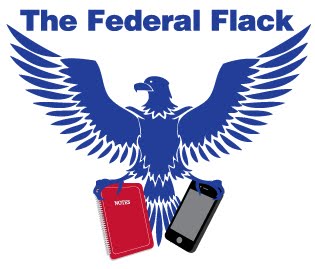The Federal
government would grind to a halt without the services of writers and editors.
Think about
it. Who would draft regulations for publication
in the Federal Register? How would state
and local governments, businesses, industry and the general public learn about
the results of Federal research and activities of the bureaucracy? And what about the thousands and thousands of
letters and emails Federal agencies receive each day?
- A PowerPoint jockey for the Department of Health and Human Service’s Center for
Substance Abuse Treatment in Rockville, MD;
- A
correspondence manager for the Bureau of Immigrations and Customs Enforcement
in Washington, DC; and,
- A
technical writer for the Bureau of Labor Statistics, also in Washington, DC.
Let's get started.
Communicating Substance Abuse Research Through PowerPoint
PowerPoint
has a bad reputation. Used properly,
PowerPoint slides illustrate key concepts and enhances a speaker's comments HHS’s Center for Substance Abuse Treatment is looking for a writer-editor with extensive experience in PowerPoint.
CSAT works with states and community-based groups to improve and
expand existing substance abuse treatment services under the Substance Abuse
Prevention and Treatment Block Grant Program. Its
initiatives and programs are based on research findings and the general
consensus of experts in the addiction field.
To
communicate CSAT’s research findings and program activities, the Center relies
heavily on PowerPoint presentations. CSAT is hiring a writer-editor to analyze research and program activities and develop PowerPoint presentations,
speeches and briefings for use in communicating within HHS and the public health care
community. The writer-editor will also edit and approve program reports, project summaries, monographs, and other print
products.
Skills needed for the position include:
·
Experience reviewing, analyzing, and abstracting health data
from reports, surveys, and other sources;
· The ability to work with senior management, subject matter experts,
representatives of external organizations, and others regarding the nature and
content of public presentations; and
·
Experience in using advanced PowerPoint techniques to prepare
discussion points, graphs, charts, trend lines, and other presentation
materials.
The
salary for the GS-13 position ranges from $89,033 to $115,742.
Responding To Congress and the Public
Someone’s got
to answer the mail at government agencies. And when the subject
is immigration, you can be sure that there will be a lot of mail. Correspondence management at Federal agencies
is handled by executive secretariats, or “Exec Sec.” Every letter or communication addressed to
the agency or its top leadership – from citizen complaints to Congressional inquires
– is logged in and farmed out for response. Draft responses must be approved by the responding office, and usually
the attorneys, before it is sent back to the front office for final review and
signature.
ICE is
hiring a writer-editor in its Executive Secretariat, who “will be responsible
for providing professional, timely, and accurate responses to public,
governmental, and congressional correspondence.”
The
writer-editor will conduct research and interviews within ICE to develop responses and coordinate approvals with all relevant offices. This position is being advertised at three
grades, GS-9, GS-11 and GS-12, depending on the level of responsibility given
and supervision provided. See my previous posting for details on how pay scales for writer-editors are developed.
A GS-9 writer-editor
will be responsible for drafting responses for review by managers before the
documents are circulated for clearance. The salary range for a GS-9 is $51,630 to $67,114.
If hired
as a GS-11, the writer-editor would independently research and prepare official responses to congressional and other official
inquiries for signature by ICE leadership. He/she would also coordinate and
developing information between various resources in order to respond to
congressional questions for the record, or detailed information regarding
organizational responsibilities, practices, and procedures. Salary range for a
GS-11 is $62,467 to $81,204.
A GS-12 writer-editor in ICE’s Exec Sec is the office’s editorial
guru. In addition his/her other duties,
a GS-12 would proofread outgoing correspondence, reviewing for spelling,
grammar and style; and advise other offices on developing written products such
as guidelines, regulations and
policies. Salary range for a GS 12 is $74,872 to $97,333.
Writing And Editing Technical Journals
Federal
agencies issue reams of reports and journals. The Labor Department’s Bureau of Labor Statistics, for example, collects,
processes, analyzes, and disseminates essential statistical data to the
American public, the U.S. Congress, other Federal agencies, state and local
governments, business and labor.
The BLS publishes numerous
products, including the Monthly Labor Review, a monthly journal providing the latest
analysis, and research on employment, inflation, wages, compensation,
productivity, staffing patterns in various occupational and industrial settings.
The BLS is hiring a technical editor to work in the BLS’s publications
office, editing articles, reports, booklets, periodicals, chart books, and
brochures for print or electronic publication. He/she will also evaluate
submissions to the Monthly Labor Review. Other duties will include reviewing manuscripts, creating and editing
charts and tables, and making the written product more reader-friendly.
Interpersonal
skills are among the desired attributes of the writer editor. The BLS is looking for an editor used to collaborating
with others, being able to persuade and negotiate, and communicate orally
through briefings, presentations and speeches.
The
position is being advertised as a GS-9.
A future
post will discuss the value placed by Federal agencies on oral communications
and other interpersonal skills.
